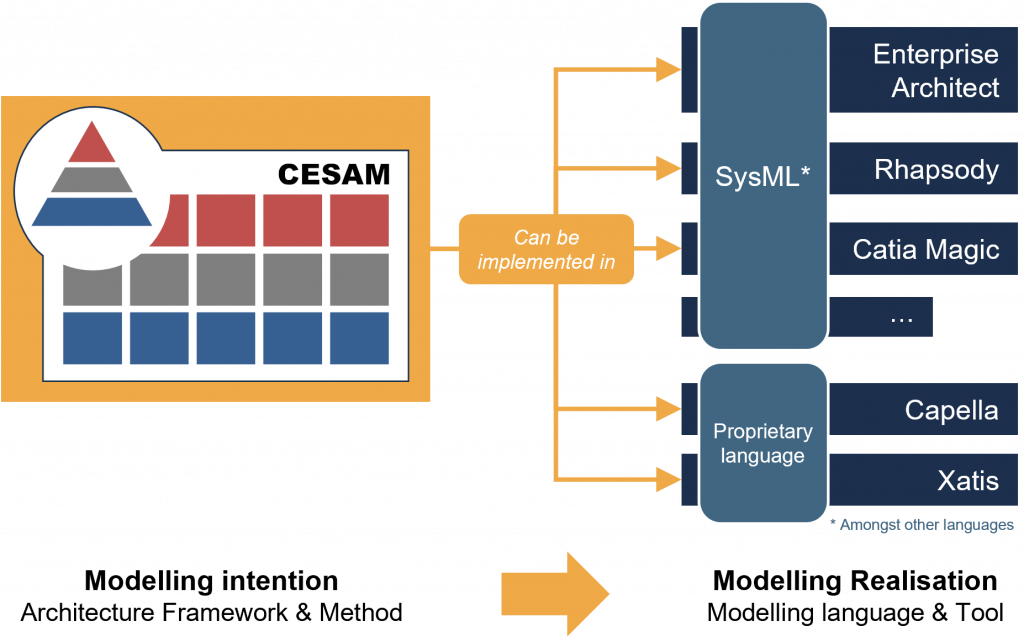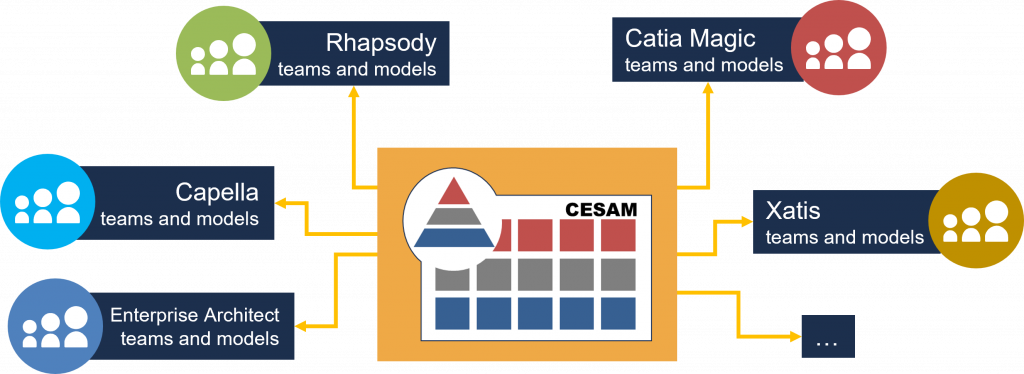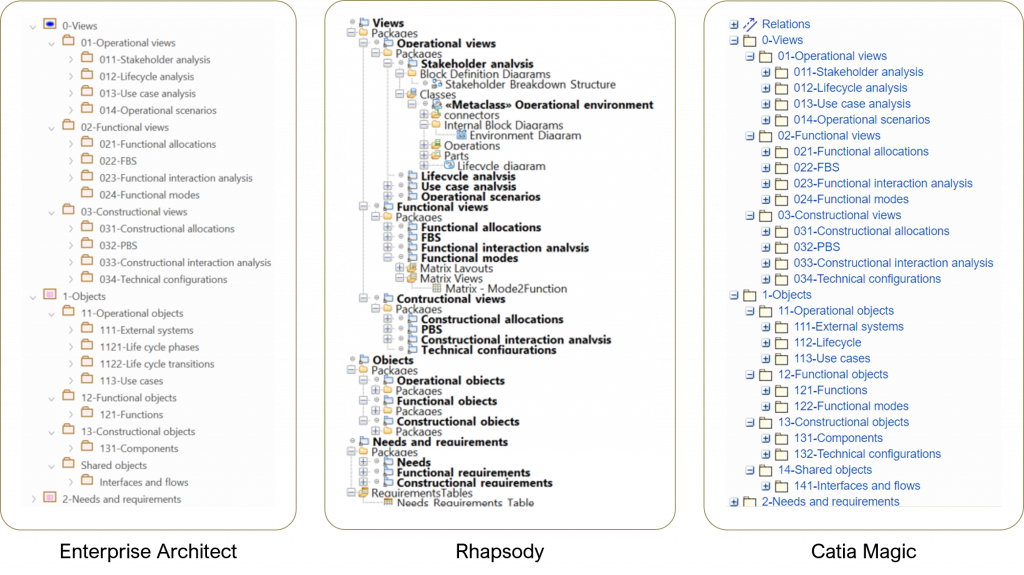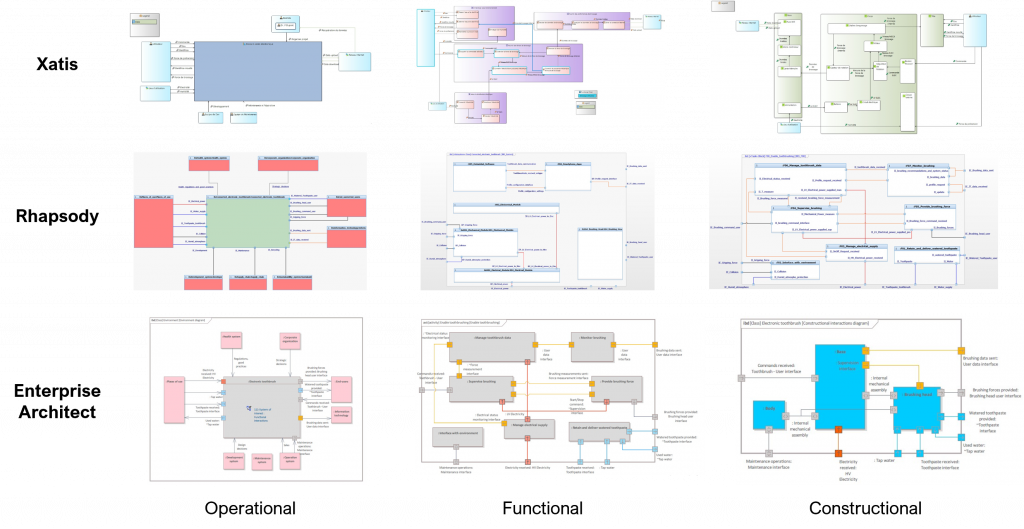| Overview of MBSE tools
MBSE tools are software programs designed to structure and automate the modeling of complex systems. They centralize and visualize the various dimensions of a system’s architecture, facilitating analysis, communication, and decision-making throughout the project lifecycle. These tools contribute to a more rigorous and consistent MBSE approach by offering functionalities tailored to the specific needs of systems engineering.
Here are the main MBSE tools used by our clients. For each tool, the vendor, the modeling language used, and any integration with a system architecture methodology are specified. The latter does not affect compatibility with the CESAM method, which is highly consistent in all cases.
When choosing a tool, other criteria are important, such as the possibility of continuity with other tools, ergonomics, and price.




